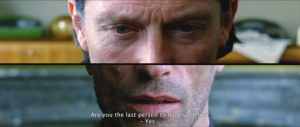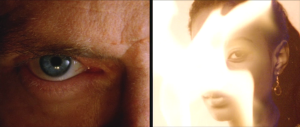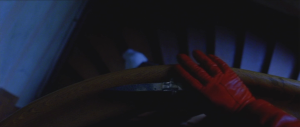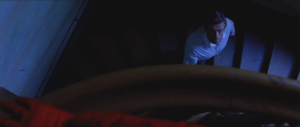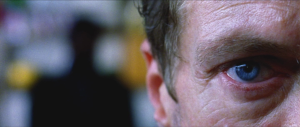 Review: One Night Only
Review: One Night Only
The Strange Colour of Your Body’s Tears (Hélène Cattet & Bruno Forzani, Belgium/France, 2013, 101 min)
UW Cinematheque, 4070 Vilas Hall, Friday, October 24, 7pm»
Despite being more of a giallo psychodrama than a giallo thriller, The Strange Colour of Your Body’s Tears is worth catching for its flamboyant and vivid imagery.
Hélène Cattet and Bruno Forzani are extremely interesting stylists who take the giallo genre as a starting point for vibrant visual storytelling. Some consider the giallo film a b-grade (or worse) pulp genre; think of the psycho-sexual thrillers of Italian filmmakers Mario Bava and Dario Argento, who certainly have their fans but are anything but high art. Cattet and Forzani, on the other hand, take the visual vocabulary and genre conventions of giallo and swing for the art cinema fences, both visually and narratively. Unlike some, I was a fan of their first feature, Amer (2009), which featured an audacious, dialogue-less first two-thirds of the film that was exciting and pure; but it also was burdened by a final act that tried a bit too hard to connect the dots in the plot. Their new feature, The Strange Colour of Your Body’s Tears might have the opposite problem: as inspired as their images can be, at some point you stop caring beyond the level of the image because there is too little effort to connect any dots. But the pleasures at the level of the image remain thoroughly engaging for (nearly) the full running time of the film.
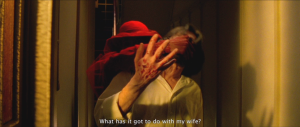
I’m going to continue my recent trend of trying to avoid plot summary as much as possible, which is actually helpful in this case because you’ll be disappointed if you are looking for a satisfying narrative. A businessman, Dan Kristensen (Klaus Tange) returns home to a discover that his apartment door has been chain-locked from the inside, and his wife is missing. Most of the rest of the film involves Dan’s efforts to explore the deep mysteries of the apartment building (which thanks to some fantastic art direction and production design is nearly a character in itself) and the dark secrets held by his neighbors. In terms of narrative structure, the plot tends to be episodic as we go on several tangents that take us away from the central mystery of Dan’s missing wife. One tangent involves the policeman assigned to investigate the case, who reveals his own previous entanglement in psycho-sexual intrigue. One of the more (knowingly) amusing moments in the film is the end of the policeman’s flashback, when Dan asks, “What does it got to do with my wife?” One might ask that about many sequences in Strange Colour, but for the most part that would be missing the point. Almost every sequence is a triumph of daring cinematography, bold production design, and fully textured sound design (for more on the soundtrack, check out Mike King’s recent entry on the Cinematheque blog).
One might have more sympathy for the film if one disregards the central narrative and instead views the film as a series of psychodramas, in which the protagonists seem to sleepwalk through a hostile world of sexual tension and nightmares. Sure, the giallo provides the visual vocabulary for the film, but it is not particularly scary or suspenseful as such. Like other films with varying levels of reality (The Congress comes to mind as another recent example) when you repeat images of violence and then reveal that the violence was a hallucination or a fantasy, it undercuts any attempt to build drama and suspense. At some point you stop caring what may or may not be happening to Dan. At that point it is best to shift gears and engage with the film on a more abstract level, as a series of repetitions, variations and motifs (hey, that head wound looks like a….what?)
Still, one doesn’t have to be scared to appreciate the filmmakers own appreciation for horror and giallo inspired imagery. The original giallo filmmakers were never afraid to use vibrant colors to set the mood and tone. The similarly flamboyant use of color in Strange Colour should be an interesting test case for those who want to see the capabilities of the DCP projection system at the Cinematheque. I’m confident that the film will play much better on a large screen in a dark room with an audience than it does at home on a television, so you should try your best to catch the sole Madison screening.
